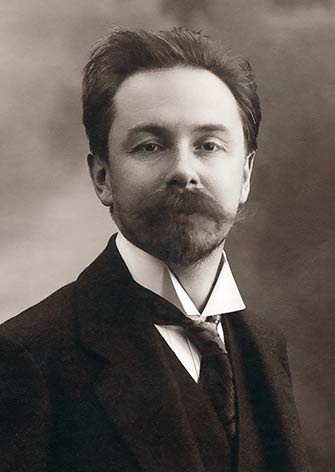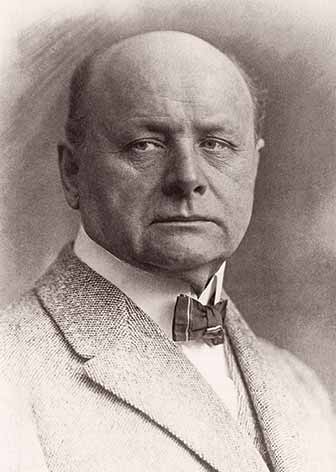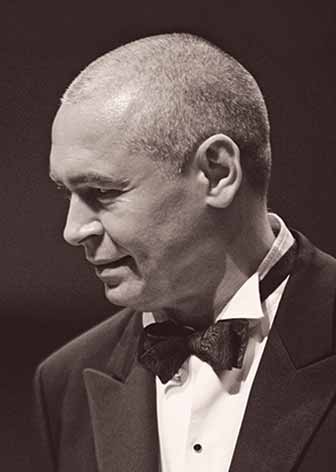Doctoral
dissertation
About the research conducted
at the Zagreb Arts Academy
Photo: © BOB RUDAN
Thesis topic
Jawlensky and Scriabin’s influences on new reproductive art practice
(The Arts Academy, University of Zagreb, 2013, mentors: F.C.A. Igor Rončević—the painter, Prof. Marcel Bačić—the theoretician, Maestro Bogdan Gagić—the classical composer)
ABSTRACT: The thesis provided a multidisciplinary study of the composer Alexander Scriabin and the painter Alexej von Jawlensky, two Russian artists living at the turn of the 20th century. Links between their artistic creations were identified in order to facilitate a dialogue between two avenues of art—painting and music. A study of the third artist, the pianist Ivo Pogorelich, was introduced to identify the meeting points between the modern productive art and the contemporary reproductive art practice. The artistic achievements of Scriabin, Jawlensky and Pogorelich share a common phenomenon—a tendency towards abstraction—so this phenomenon, which inevitably develops a conflict of opposites, became an instrument for establishing the place which the researched artists occupy in history, theory and philosophy of art. The central research issue was an artistic language created by chromatic expression in a series of small-scale works, and the application of the analysis and synthesis method made it possible to reproduce, interpret and unify generated data. Based on the results of the research, a project of the multidisciplinary virtual installation was designed, and it was intended for the concert performance of Scriabin’s piano pieces. Thus, a creative synthesis was built from unrelated artists, while a synthesis of the many languages of productive and reproductive art has been achieved within a virtual 3D space. An original artistic contribution has been realized through finding, explaining and achieving contemporary reproductive art practice, which exhibits the same approaches to abstraction that had been noted in productive art more than 100 years ago.

Alexander Scriabin
THE COMPOSER (1872.-1915.)
Russian composer and pianist who developed a growing athonal system preceding the Schönberg’s twelve-tone technique and other serial music. He is the primary figure of musical symbolism and the proclaimer of serialism.

Alexej Jawlensky
THE PAINTER (1864.-1941.)
Expressionist painter who worked in Russia, Germany and Switzerland. Although he belonged to the avant-garde groups of the Munich Circle, the Blue Rider and the Blue Four, he cannot be identified with any style movement.

Ivo Pogorelich
THE PIANIST (1958.)
Croatian pianist and world-famous artist. His suggestive interpretations provide new insights into the original music work, thus he can be regarded as the artist who transformed reproductive art into productive art.
OBJECT OF RESEARCH: Can development processes, theoretical concepts and instruments characteristic of productive art from the Modern period of the early 20th century be applied to the contemporary reproductive art practice for the purpose of showing how reproductive art has transformed itself into productive art?
OBJECTIVE AND HYPOTHESES: The goal of the research was to subject to analysis the works, underlying concepts and methods of the composer Scriabin and painter Jawlensky and, then, to synthesize them from a contemporary vantage point to understand better the two artists and their impact on my work. In order to test the validity of the hypothesis lying at the heart of the theories propounded by philosophers such as Georg Friedrich Hegel, Friedrich Nietzsche, Oswald Spengler, Hans Belting, Arthur Danto, Donald Kuspit etc., arguing that the end of Western culture is pressingly evident in the abstract nature of the arts, the chief hypothesis was that in today’s contemporary context it should be possible to identify this same tendency in the form of its own reflection, i.e. in the reproduction of its own production.
METHOD APPLICATION AS EXPERIMENTAL STUDY DESIGN: Since the research progressed as a development of theses, antitheses and syntheses as parts of a unity and a struggle of opposites, in fact as a set of bumpy transformations of quantity into quality and negations of negation, I chose the methods of dialectical analysis and synthesis as the most appropriate path to follow. In order to arrive at independent results and conclusions, in the first stage I applied the method of dialectical analysis to the fields of Western modern productive art and to contemporary reproductive art practice. In the second stage, I employed the method of dialectical synthesis to integrate my findings in a project comprising a virtual, multidisciplinary 3D installation.
MULTIDISCIPLINARY VIRTUAL LIGHT 3D INSTALLATION: The installation is an integral part of my doctoral dissertation and book entitled Abstract Reproductive as Productive Art: Chromatic Fantasies of the Composer Alexander Scriabin, Painter Alexej Jawlensky and Pianist Ivo Pogorelich. These seemingly unrelated artists and their work were studied together in order to make the arts of music and painting to meet on the same platform. The installation purports to show the productive aspects in reproductive art and is built as a counterpoint of independent ideas interacting in a common thought structure. It is set up on Lake Lugano, which is not a mere coincidence when we know that all three artists began showing a growing interest in abstraction in Switzerland. The 3D multimedia projection sets up Scriabin’s serialism in music in space, and the pictorial serialism of Jawlensky is presented so as to show how it occupies time. Simultaneously, simulated motion is achieved with a system of lasers responding to Pogorelich’s changing body gravity. The lasers are an interpretation of Scriabin’s colour system, taking as base the quint circle and Isaac Newton’s optics. As the project will not in actuality be played out so that real people could in fact assume their assigned roles, I am responsible for the entire creative input. The visual content and computer projection are accompanied by my own performance of Scriabin’s composition Feuillet d’album Op. 58. Originally, however, the installation was designed for Pogorelich’s performance of Scriabin’s piano pieces. The video was projected in 2013 at the Academy of Fine Arts in Zagreb, in 2014 it was selected by the International ArtExpo & MECA (Mediterráneo Centro Artístico) for the International Experimental Video-Art Festival Pixels of Identities, held in the Museum of Almería (Spain), in 2015 it was projected during my book promotion at the Academy of Music in Zagreb, and in 2019 in the Museum of Contemporary Art Zagreb on the occasion of marking the 100th anniversary of establishing Bauhaus.